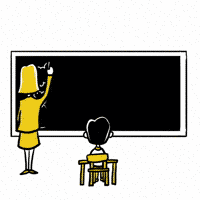
Environmental education is based on learning through experiences, reflecting on those experiences, and applying the learning to help address real-world problems. Learning by doing can help develop critical and creative thinking skills and help learners develop a deeper understanding of environmental, social, and economic issues. Through service learning, investigation, problem solving, and similar authentic experiences, environmental education bridges the gap between theory and practice. Learners develop knowledge and skills through authentic and directly meaningful experiences with the environment, environmental issues, and the community.
Transcript:
I'm the Senior Vice President for Education for the American Forest Foundation, and then that role directs the Project Learning Tree environmental education program.
One of the great things that I was able to do early in my career was to work directly with schools and students in really getting them to experience the outdoors even though they were in urban environments and seeing that they could apply what they were learning in the classroom to actions and activities outside of the classroom and extending into the community as well.
I think environmental education is just good education. And good education takes advantage of pedagogy like the experiential learning cycle and authentic learning.
The first part of the cycle is doing an experience. Here with Project Learning Tree, we have a number of different lessons or activities that the educator can use with his or her students. And it's really getting them to do something, hands-on learning. So you do an experience, but then you don't just do the activity.
The next part of the cycle is to really reflect on how did you feel about that experience? Did you like it? Did it cause you to think in new ways? After you reflect on that, then it's did you learn something new? What might this mean to you? What does that learning experience have in terms of meaning to your life, and to the world around you?
And then the last part of it is, alright, let's take that knowledge that you gained by doing that experience and apply it to a new situation or in the case of environmental education, applying it to the world around you, whether they're taking a report to their local town council, or they're making a change in their school grounds, or their school building, or they're taking something back to their homes to make changes at their home, in terms of how they have an impact on the environment.
I think one of the challenges with EE is that folks think we'll get kids outside and they'll do a fun activity. We have to be careful that it's not just a one-off fun activity, but that it's embedded in that whole cycle, you know that they have to reflect on it. They have to make some conclusions about it, and then they have to apply it. That we as environmental educators need to make sure that we're not just stopping at the concrete experience, but that we're going through the whole cycle. And in environmental education, we really want the learner to be engaged in that learning process. So I see it as critical to developing an understanding of the world around us our place within it and then our responsibility for it.